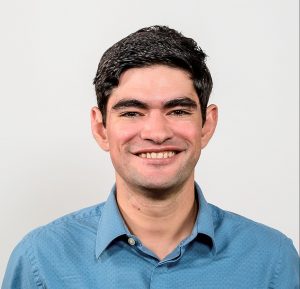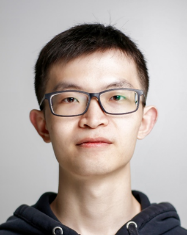
Chip-scale optical to RF link via harmonic injection locking
Due to their highly stable timing characteristics, optical frequency combs have become instrumental in applications ranging from spectroscopy to ultra-wideband optical interconnects, high-speed signal processing, and exoplanet search. Furthermore, optical frequency combs serve as the main gear to create the most precise time-keeping tools to date, optical atomic clocks. In the past few years, there has been a necessity for frequency combs to become more compact, robust to environmental disturbances, and extremely energy efficient. To that end, photonic integration shows a clear pathway to bring optical frequency combs to satellites, airships, drones, cars, and even smartphones. Therefore, the development of chip-scale optical frequency combs has become a topic of high interest in the optics community. In this talk, I will present the work that paves the way to achieve a compact frequency comb by linking together Kerr microresonator soliton combs and semiconductor mode-locked lasers via optical frequency division. First, I will focus in the development of harmonic injection locking, a technique that can optically divide EOM-based frequency combs with repetition rates in the 300 GHz range down to 10 GHz using a chip-scale semiconductor mode-locked laser. By using harmonic injection locking, the high timing-stability from the EOM-comb is transferred to the mode-locked laser and we measure a fractional frequency stability of 10-12 at 1 second (10 mHz in 10 GHz). Furthermore, I will talk about recent experiments were we have replaced the EOM-based comb with a 300 GHz Kerr microresonator soliton comb and the early results of linking such comb to a chip-scale semiconductor mode-locked laser.
Ricardo is currently a PhD candidate in Prof. Peter Delyett’s Ultrafast Photonics Group. He received the B.S. degree in electrical engineering from ITESO, Guadalajara, Mexico, in 2013, and the M.S. degree in optics and photonics with CREOL in 2018. His research interests focus on chip-scale frequency comb sources and injection locking schemes for applications in communications and metrology. Ricardo has authored and co-authored 25 journal articles and conference proceedings articles, and is also a co-inventor in two granted US patents. Ricardo is a student member of OSA and IEEE since 2017 and was granted the CONACyT Scholarship (2015-2020) and the CREOL Dean’s Dissertation Completion Fellowship (Spring 2021).
Runners-up

Development of Intensity-Based Single-Molecule Assays
Fluorescence microscopy is a popular tool among biologists because it can provide the flexibility needed to analyze a variety of sample types while maintaining high contrast ratios and the ability to selectively visualize structures of interest. A unique application of fluorescence microscopy is single-molecule imaging, where individual biomolecules, such as proteins or strands of DNA, are labeled with fluorophores and imaged in a nondestructive manner. Single-molecule imaging methods can provide information that is often inaccessible with traditional bulk assays, which provide an averaged signal from the overall sample response. Single-molecule techniques can be used to assess short-lived interactions between biomolecules, conformational changes of a biomolecule, or the number of biomolecules interacting together, which are all typically impossible to analyze with standard bulk assays. In my talk, I will describe my work on developing a single-molecule assay to count the number of proteins in a complex from the intensity of a diffraction-limited spot. The goal is to apply this technique to monitor the aggregation of a protein implicated in Parkinson’s disease, which currently can only be diagnosed post-mortem.
Ben is a fifth year PhD candidate in Dr. Han’s research group. Prior to joining CREOL, Ben received his bachelor’s degree in Materials Science & Engineering at the University of Michigan, and then received a master’s degree in Materials Science & Engineering at the University of Washington. Currently, Ben’s research within Dr. Han’s group focuses on developing a fluorescence microscopy method to count the number of proteins interacting with one another from the intensity of the diffraction-limited spot in the microscope image. The method is universal and can be applied to any protein for which antibodies are available, but Ben aims to apply the technique to monitor a protein related to Parkinson’s disease, which currently has no diagnostic test.

Miniature planar telescope mediated by liquid crystal polymers
Non-mechanical beam steering with lightweight, compact, high-efficiency, high-precision and large-angle is pivotal for light detection and ranging (LiDAR) of autonomous vehicles, eye-tracking for near-to-eye displays, microscopy, optical tweezers, and high-precision three-dimensional (3D) printing. However, even the most matured optical phased array can only provide quasi-continuous, efficient beam steering within a relatively small angle range. A telescope module with angle magnification function can be coupled to enlarge the steering range or precision. But obtaining a compact, low cost, lightweight, high quality telescope module with conventional optics remains challenging. Patterned liquid crystal-based planar optical elements offer great design freedom for manipulating the 2D phase profile of light. Owing to the advantages of high efficiency, thinness, low cost, easy processing, flexibility, and response to environmental stimuli, plethora of high-quality optical devices have been demonstrated. Here, a miniature planar telescope mediated by liquid crystal polymers is proposed to offer angle magnification independent of incident spatial location. Based on this guideline, planar optical elements are fabricated using a customized exposure method and assembled into planar telescopes with different magnification factors. Within the incident field of view, over 80% optical efficiency is achieved. Such a miniature planar telescope shows the potential of cascaded liquid crystal planar optical elements for realizing functionalities that cannot be fulfilled by single optical elements, and enables lightweight, low loss, passive optical transmitters for widespread applications.
Ziqian is currently a Ph.D. candidate in Dr. Shin-Tson Wu’s Liquid Crystal Photonics and Display Group. He received his B.S. degree in material physics from Nanjing University in 2016. His research interest includes liquid crystal photonics, mini/micro-LED displays, and near-eye displays. So far, he has coauthored 35 journal papers and 14 conference proceedings.